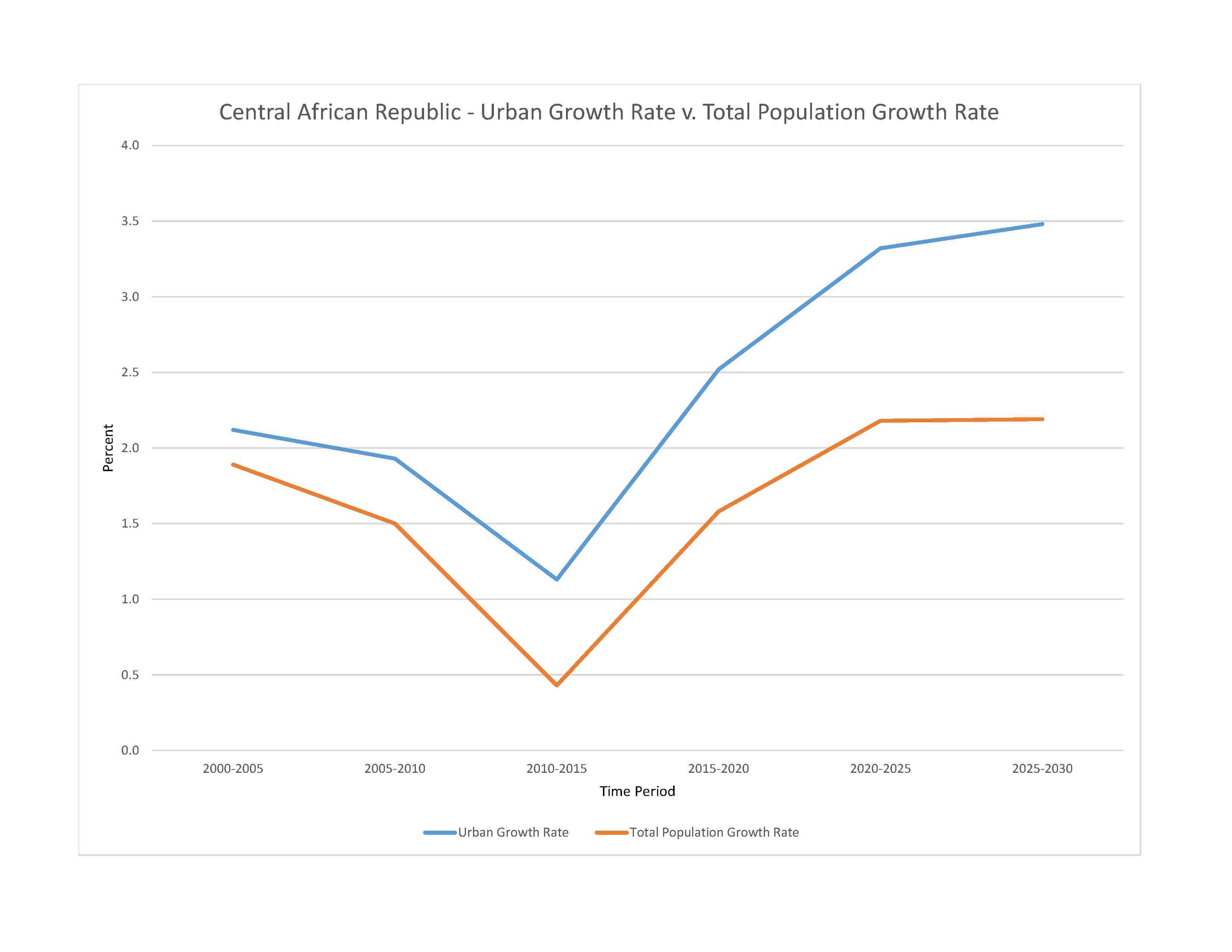
water pollution; tap water is not potable; poaching and mismanagement have diminished the country's reputation as one of the last great wildlife refuges; desertification; deforestation; soil erosion
party to: Biodiversity, Climate Change, Climate Change-Kyoto Protocol, Climate Change-Paris Agreement, Comprehensive Nuclear Test Ban, Desertification, Endangered Species, Hazardous Wastes, Nuclear Test Ban, Ozone Layer Protection, Tropical Timber 2006, Wetlands
signed, but not ratified: Law of the Sea
tropical; hot, dry winters; mild to hot, wet summers
agricultural land: 8.1% (2018 est.)
arable land: 2.9% (2018 est.)
permanent crops: 0.1% (2018 est.)
permanent pasture: 5.1% (2018 est.)
forest: 36.2% (2018 est.)
other: 55.7% (2018 est.)
urban population: 43.6% of total population (2023)
rate of urbanization: 3.32% annual rate of change (2020-25 est.)

exceptional shortfall in aggregate food production/supplies:due to internal conflict and high food prices - according to the latest analysis, issued in November 2022, the number of people in Crisis and above is estimated at 2.7 million between September 2022 and March 2023; this is mainly attributed to the impact of civil insecurity and high food prices; persisting insecurity and population displacements continue to affect agricultural activities and limit farmers’ access to crop growing areas and agricultural inputs; elevated international prices of fuel and fertilizers, largely imported, have reportedly led to a lower use of agricultural inputs in 2022, especially among smallholder farmers, with a negative impact on yields (2023)
8.99% of GDP (2018 est.)
0% of GDP (2018 est.)
particulate matter emissions: 27.2 micrograms per cubic meter (2019 est.)
carbon dioxide emissions: 0.3 megatons (2016 est.)
methane emissions: 22.44 megatons (2020 est.)
municipal solid waste generated annually: 1,105,983 tons (2014 est.)
Oubangui (Ubangi) river [s] (shared with Democratic Republic of Congo and Republic of Congo [m]) - 2,270 km
note – [s] after country name indicates river source; [m] after country name indicates river mouth
Atlantic Ocean drainage: Congo (3,730,881 sq km), (Mediterranean Sea) Nile (3,254,853 sq km)
Internal (endorheic basin) drainage: Lake Chad (2,497,738 sq km)
Congo Basin, Lake Chad Basin
municipal: 60 million cubic meters (2020 est.)
industrial: 10 million cubic meters (2020 est.)
agricultural: 400,000 cubic meters (2017 est.)
141 billion cubic meters (2020 est.)
NOTE: The information regarding Central African Republic on this page is re-published from the 2024 World Fact Book of the United States Central Intelligence Agency and other sources. No claims are made regarding the accuracy of Central African Republic 2024 information contained here. All suggestions for corrections of any errors about Central African Republic 2024 should be addressed to the CIA or the source cited on each page.
This page was last modified 04 May 24, Copyright © 2024 ITA all rights reserved.